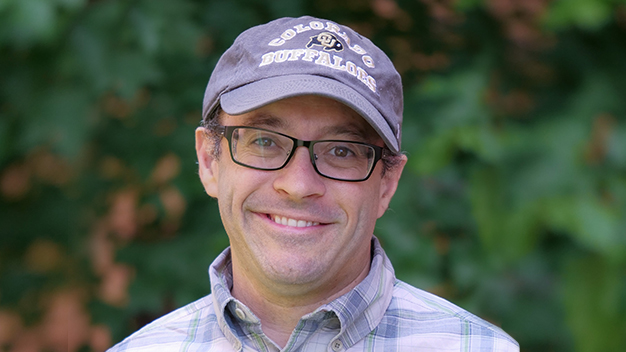Using data to influence institutional decisions
Brad Weiner

Episode notes
We were recently joined by Brad Weiner, Chief Data Officer at University of Colorado Boulder to talk about the intersection of data science and higher ed.
At 8:53 Brad shared an example where their data team influenced an institutional-level decision.
Brad shares, “Doing the data work is the easier part, getting people to actually use the data and inform policies is much trickier. I always like to point to the fact that it really does take a village. We need all kinds of people to be invested and interested in a project.”
One example we’ve been pointing to lately:
We really want students to be successful. Not just because that’s our core mission but because we’re measured on that. All universities are measured on that in a lot of ways.
Students want to go to a place where they’re going to be successful. Building a college degree really is a supply-chain problem. You need to have all of these constituent parts and they need to land at the right time.
There’s tons of dependencies and those dependencies need to be built out years in advance.
So if we don’t have enough chemistry labs, that student doesn’t get to take chemistry. If not enough students take chemistry, they don’t have the required courses and they can’t graduate.
We’re constantly looking for these things. One of the things that we have found from the people in the bookstore is that students found the prices of their textbooks to be something of a barrier.
We’re not only trying to graduate students, but we’re trying to graduate everybody as equitably as possible. If the experience is one way for some students and one way for another group of students, that is not considered success.
What we were finding, and what we had heard, what we had learned, was that students were potentially choosing which courses to take based on the cost of the textbooks.
Students of today are used to subscription services. Nobody ever thinks, how many songs did I listen to on Spotify? Am I getting my money’s worth there? They’re used to the Netflix models where you just pay one price and you get everything. It doesn’t matter how much you use it or how little you use it.
We’re one of the first dozen or 15 schools that have gone in on this bookstore-equity access model, which is basically, students pay one price. This gives them the financial stability, predictability, and their ability to budget on books, but also the ability to be really flexible in what classes they take.
By paying that one price, they get what we call day-one digital access. There’s evidence that having digital, immediate access to your books is actually a student success lever. So for a variety of reasons, we wanted to implement this program.
One of the things that we were asked to do is figure out what price should the bundle be? Pricing is a really complicated problem – if the price is too high, nobody participates and the whole thing collapses on itself. And if it’s too low, you don’t cover your costs.
We had a whole team of people who were thinking through that problem. We are happy to say that we used our super-sweet Posit Workbench set-up to simulate a whole bunch of different options.
The Data Science team did that and we were able to guide them on what that price was. And it got deployed out. So next year, from what I understand, all undergraduates at CU Boulder will pay $279 a semester, and get all of their books on day one. If they drop a class, then those books go away and the new ones come in.
I think it would be valuable to follow up with me a year from now and see how well we did because this is– it’s a known unknown. We’re going to have to see where it landed.
Featured in this episode

Brad Weiner is the Associate Vice Chancellor and Chief Data Officer at the University of Colorado Boulder. Brad has spent more than two decades in higher education administration including a decade in the analytics and data science spaces. He is currently focused on building out the technical, people, and governance structures for a modern data organization within a university setting. When he is not waiting for his queries to run, he enjoys cooking, traveling, and going on hikes with his family.


